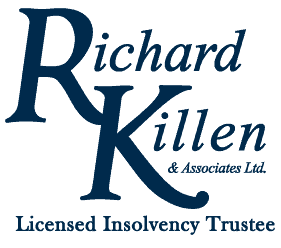Student Loan Debt in Ontario: What Grads Need To Know
Posted on: October 21, 2025Posted in Bankruptcy, Financial Advice | Comments Off on Student Loan Debt in Ontario: What Grads Need To Know

For many recent graduates, student loan debt in Ontario is more than just a monthly payment—it’s a financial reality that shapes career choices, housing decisions, and mental health. Whether you borrowed through OSAP, the Canada Student Loans Program, or took out a private student loan, the pressure to repay can feel relentless—especially when life after graduation doesn’t go exactly as planned.
Here’s the reality: Canadians owe over $28 billion in government-backed education financing, and Ontario borrowers carry a significant share of that burden. The average student loan debt in Canada is approximately $26,075 per borrower, with some individuals—especially those in professional programs—leaving school with balances exceeding $100,000.
Ontario also leads the country in tuition costs, with undergraduate programs averaging $6,834 and graduate programs around $7,437. Executive MBA programs in the province top the charts at $93,985, compared to just $13,719 in Quebec. It’s no wonder so many people turn to private student loans, lines of credit, or bank-issued tuition financing just to get through school.
Whether you’re just starting repayment or years into juggling multiple obligations, understanding your legal options is essential. Relief may be closer than you think—but it depends on the type of academic borrowing you’ve taken on, how long you’ve been out of school, and whether you’re ready to explore solutions beyond traditional repayment. With the right guidance, even the most overwhelming education-related debt can be addressed strategically and lawfully.
What’s the 7-Year Rule?
The 7-year rule is one of the most misunderstood aspects of student loan bankruptcy in Ontario. Under Section 178(1) of the Bankruptcy and Insolvency Act, government-issued education support—whether federal or provincial—can only be discharged through bankruptcy or a consumer proposal if it has been at least seven years since you were last enrolled in full-time or part-time studies.
This means:
- The clock starts ticking from the last day you attended classes, not when you got the funding.
- If you go back to school—even for one course—the clock resets. You’ll need to wait another seven years from that new date.
- You don’t have to graduate for the rule to apply. You just need to stop being a student.
The Hardship Provision: A Possible Early Exit From Debt
If it’s only been five years, there’s still hope. You might qualify under something called the hardship provision—an exception that allows you to apply to the court to have your education-related debt discharged earlier. To be eligible, you’ll need to show that you’ve made a genuine effort to repay and are facing extreme financial hardship. Just keep in mind: this isn’t automatic. It involves a separate legal process, and approval isn’t guaranteed.
A Licensed Insolvency Trustee (LIT) is the person who can walk you through your options and figure out what’s possible based on your situation.
Before we dive into your options for debt relief, it helps to break down the types of education funding you might have received—because not all of them follow the same rules when it comes to bankruptcy.
Federal vs. Provincial Funding: What’s the Difference?
If you borrowed through government programs, you likely received a mix of federal student loans and provincial student loans. They’re often bundled together during school, but they’re managed separately once repayment begins—and they come with slightly different rules and support options.
Federal Student Loans (Canada Student Loans Program)
- Issued by the federal government
- Administered through the National Student Loans Service Centre (NSLSC)
- Subject to the 7-year rule for discharge through bankruptcy or a consumer proposal
- May qualify for the Repayment Assistance Plan (RAP) to reduce or pause payments based on income
Provincial Student Loans (Ontario Student Assistance Program – OSAP)
- Issued by the Ontario government
- Managed by the Ministry of Colleges and Universities
- Also subject to the 7-year rule under bankruptcy law
- OSAP funding is often a mix of grants and loans:
- Only the loan portion is eligible for discharge
- You’ll need to confirm how much of your OSAP support was repayable
- Offers its own repayment assistance programs, separate from federal options
Even though both types of funding follow the same discharge timeline, the way they’re administered—and the kind of help available—can vary. That’s why it’s worth reviewing both sides of your education financing before making any decisions.
What About Private Student Loans?
Now let’s talk about private student loans—which includes student lines of credit, bank-issued borrowing, or co-signed personal funding. These are totally different from government loans.
Here’s the good news:
- They’re not subject to the 7-year rule
- You can include them in a bankruptcy or consumer proposal right away
- They often come with higher interest rates and fewer protections
So if your debt is mostly private—maybe you used a credit card for tuition or took out a bank loan—you might be eligible for relief much sooner than you think.
Bankruptcy vs. Consumer Proposal: Which One’s Better?
Both options can help you get out from under your education-related debt, but they work a little differently.
Bankruptcy
- Discharges eligible debts, including student loans (if the 7-year rule is met)
- Requires surrendering certain assets
- Affects your credit for 6–7 years
Consumer Proposal
- Negotiates a reduced repayment plan with creditors
- Can include student loans if the 7-year rule is met
- Allows you to keep assets
- Affects your credit for 3 years after completion
If your tuition-related obligations are older than seven years, either option may work. If not, a consumer proposal can still help by reducing other liabilities and freeing up cash flow to stay current on your education-related payments.
Why You Need a Licensed Insolvency Trustee (LIT)
Navigating student loan bankruptcy in Ontario isn’t something you should try to figure out on your own. A Licensed Insolvency Trustee will:
- Look at your funding sources and repayment history
- Confirm your last date of study
- Check if you qualify under the 7-year rule or hardship provision
- Explain how bankruptcy or a consumer proposal would affect your credit, assets, and future borrowing
LITs federally regulated professionals—not debt consultants or credit counselors—and their advice is legally binding and confidential.
Debt Relief Is Possible—But Timing and Guidance Matter
Education-related debt can feel like an impossible burden, but there are paths forward. If you’re an Ontario grad struggling with repayment, it’s crucial to understand your options. The 7-year rule is a key threshold for discharging federal and provincial student loans through bankruptcy or a consumer proposal, while private student loans may be eligible for immediate relief. The key is knowing what kind of funding you have and how long it’s been since you left school.
Whether you’re considering bankruptcy for student loans, exploring a consumer proposal, or seeking repayment assistance, the most important step is to get accurate information from a qualified professional.
People are always assuming that you can’t resolve a tax debt or student loan debt through the bankruptcy/proposal system. And they are usually wrong. However, it’s complicated and you need a LIT to explain how it works for your individual case.
Don’t let misinformation keep you stuck. A Licensed Insolvency Trustee can help you assess your eligibility, explore alternatives, and take the first step toward financial recovery. Whether you’re just out of school or years into repayment, relief is possible—and it starts with understanding your rights.
Take Control Of Your Financial Future
Education debt doesn’t have to define your future. A Licensed Insolvency Trustee can help you understand the 7-year rule and take confident steps toward relief. Call today for a free, confidential consultation. Call 1-888-545-5365 to talk to a Trustee now.










